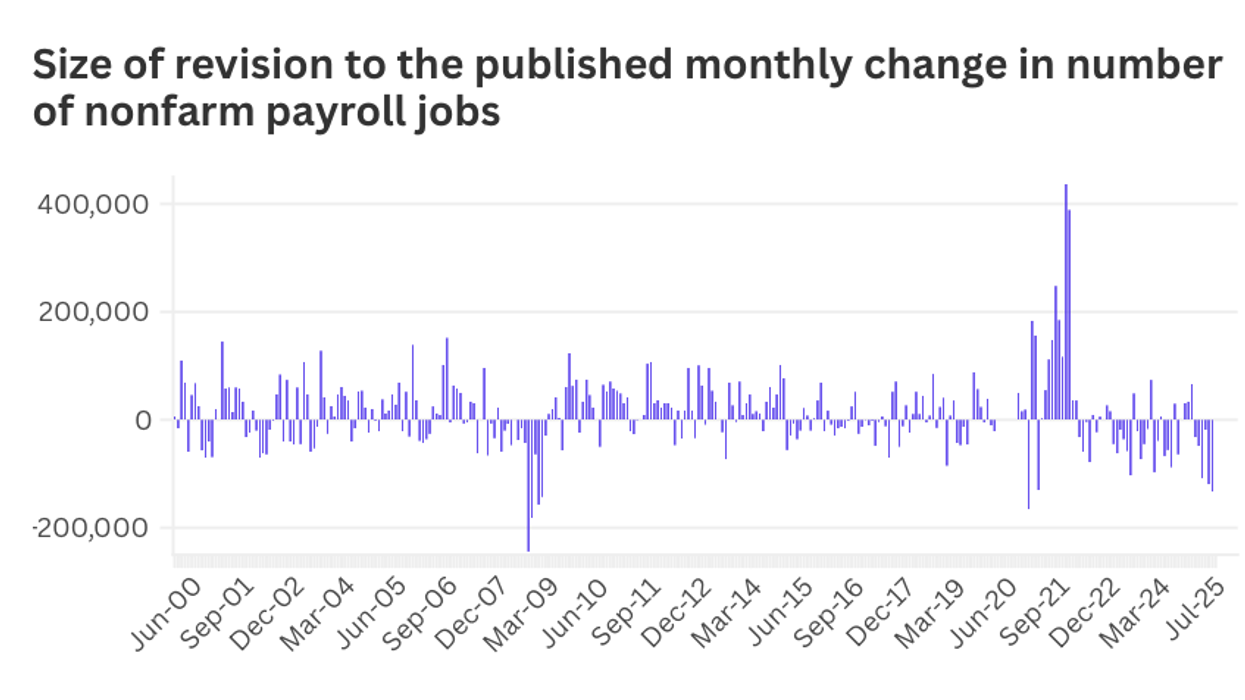On Friday, President Trump announced that he was firing Erika McEntarfer, the head of the Bureau of Labor Statistics. Earlier that day the BLS had issued its monthly national jobs report, which showed lackluster growth in employment, and a slight uptick in the unemployment rate.
The report showed a relatively small increase in employment for July: +73,000 nonfarm payroll jobs. The BLS also included revisions to the preliminary jobs numbers reported earlier, stating: “Revisions for May and June were larger than normal. The change in total nonfarm payroll employment for May was revised down by 125,000, from +144,000 to +19,000, and the change for June was revised down by 133,000, from +147,000 to +14,000.”
While it is typical for the BLS to issue revisions, the size of these revisions raised some eyebrows, especially among those who favor the Trump administration’s economic policies.
A quick look at the BLS’s data on revisions show that the size of these revisions is indeed “larger than normal,” but not at all unprecedented. In first 300 months of the century, excluding the especially volatile initial six months of the COVID-19 pandemic, there have been ten downward revisions exceeding 100,000, including the two issued Friday.
In addition, there have been 21 upward revisions of 100,000 or more. Nine of these were in 2021, during the period of rapid job recovery following the initial COVID-19-related shocks.
According to BLS summary data, the average revision to the monthly jobs numbers since 2003 is 51,000. Note that this in absolute terms, meaning on average the revision is either and increase or decrease of 51,000.
Mr. Trump’s firing of Ms. McEntarfer has drawn widespread criticism for potentially undermining the federal government’s ability to avoid political pressure in its reporting, including from former Commissioner of Labor Statistics, William Beach, who was appointed and served under Mr. Trump’s first administration.
For more data from the Bureau of Labor Statistics’ jobs report, see The Marketplace Dozen.
How Abnormal Are the Revisions in This Month’s Jobs Report? was originally published by the APM Research Lab.



















